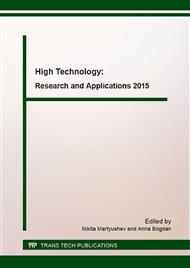p.413
p.417
p.422
p.427
p.432
p.436
p.441
p.445
p.450
Physical Justification of an Increase in the Efficacy of Radiofrequency Systems for Myocardial Ablation
Abstract:
The article presents data on dependence of the myocardial electrical impedance on the temperature. These data have high clinical relevance because radio frequency energy-induced destruction of the myocardium in the course of surgical treatment of cardiac arrhythmias should be performed transmurally. Insufficient transmural myocardial damage results in recurrence of cardiac arrhythmias. Therefore, achieving transmural treatments of the myocardium is of high significance.Studies were performed by using 20 isolated hearts. To evaluate the effectiveness of radio frequency exposure, we studied two temperature settings: myocardial normothermia (36.6 °C) and myocardial hypothermia (20 °C). The depth of destruction as well as the temperatures of the epicardial, endocardial, and intramural myocardium at the points of impact were estimated. Data showed that lower temperature decreases tissue electrical impedance and results in a greater depth of damage.
Info:
Periodical:
Pages:
432-435
Citation:
Online since:
February 2016
Keywords:
Price:
Сopyright:
© 2016 Trans Tech Publications Ltd. All Rights Reserved
Share:
Citation:


